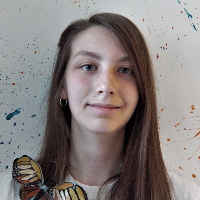The Iron Giant And How To Train Your Dragon Are Basically The Same Movie
Obviously How to Train Your Dragon and The Iron Giant aren’t exactly the same. For starters, one is a sci-fi adventure set in 1960s America and the other is a dragon fantasy set on the Isle of Berk near the end of the Viking era.
In fact, on the surface, the films appear to have nothing in common at all, but if you take a minute to look a little closer you’ll see that these two animated films share many plot points and explore the same major themes.
Family: Hogarth and Hiccup come from single-parent households
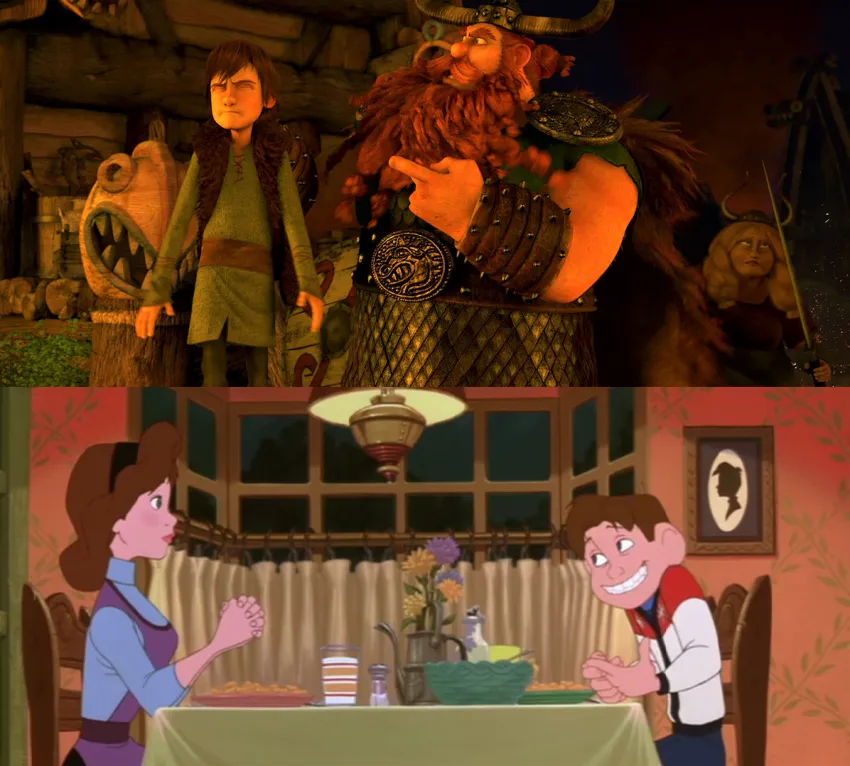
jturkbio.medium.com
In both films, the protagonists are being raised by single parent who is struggling to do what’s right for them. Although never mentioned in The Iron Giant, canonically Hogarth’s father was an air force pilot and by the time of the film has passed away (the circumstances in which he died are unknown). This leaves Hogarth’s mother Annie, voiced by Jennifer Aniston, to provide for them both.
She is clearly struggling, having to take on more shifts at the diner, where she works as a waitress, and rent out their spare room to make ends meet.
Because of the strain placed on her, she doesn’t have much energy or patience for Hogarth’s elaborate fantasies (as she sees them) so there is tension between them. Nevertheless, she loves her son dearly and drops everything to look for him when she thinks he's in danger.
Stoick, Hiccup’s father, voiced by Gerard Butler, is under an equal amount−if not more−pressure as Annie, looking after not only his son but an entire village. He worries constantly for his son who does not show as much fighting prowess as the other children in the village and frequently causes problems for the village, although inadvertently.
The two also have nothing in common and find it difficult to communicate their needs to one another, yet Stoick always does his best to do what is right for Hiccup, even putting him in for dragon training despite his concerns.
In both films, the parents are hard-working caring individuals and, although they struggle to see eye to eye with their children at first, they strive to understand them and see them for who they are.
The protagonists are different from those around them
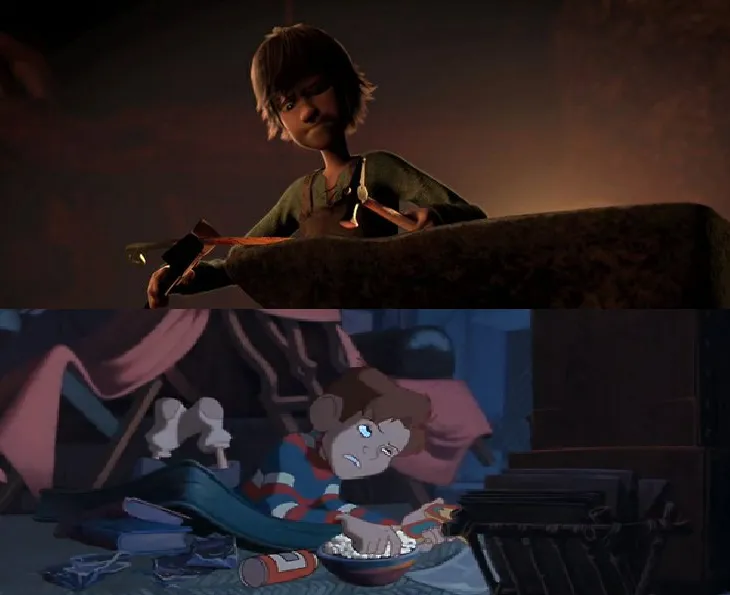
pinterest.co.uk
Aside from both the protagonists having unusual names, the protagonists in How to Train Your Dragon and The Iron Giant are social outcasts, labelled as different by others. Because of his lack of strength and pacifistic nature Hiccup is ridiculed by the children of Berk, only gaining their approval when he seems to conform to traditional Viking behaviour by conquering the dragons in his training.
Similarly, Hogarth’s mother felt he wasn’t being challenged enough academically resulting in him being moved up a grade; unfortunately, this results in him being bullied by the other children in his class for being different from them. This only stops when he is shown to have played a part in saving the town.
The boys are intelligent and resourceful and use their skills to help Toothless and the Giant. Hogarth not only teaches the Giant to speak, but he also teaches him about philosophical subjects in an easily digestible manner, such as the concept of death and the existence of souls.
He also figures out a way for the Giant to eat without disrupting the village and blowing his cover. Meanwhile, Hiccup manages to build Toothless a functional tail fin, as well as a saddle and mechanism to control the fin during flight.
Both characters are also shown to have higher levels of empathy than those around them, displaying compassion towards beings that others fear. Hogarth and Hiccup find the Giant and Toothless trapped and vulnerable and rather than killing them or leaving them to suffer they free them.
Hogarth turns off the electricity at the power station, so the Giant is able to free himself from the power lines, and Hiccup cuts the ropes binding Toothless so he can fly away (yes it was Hiccup who caught him in the first place, but the point still stands).
The Main Characters Try Hiding Their Discoveries
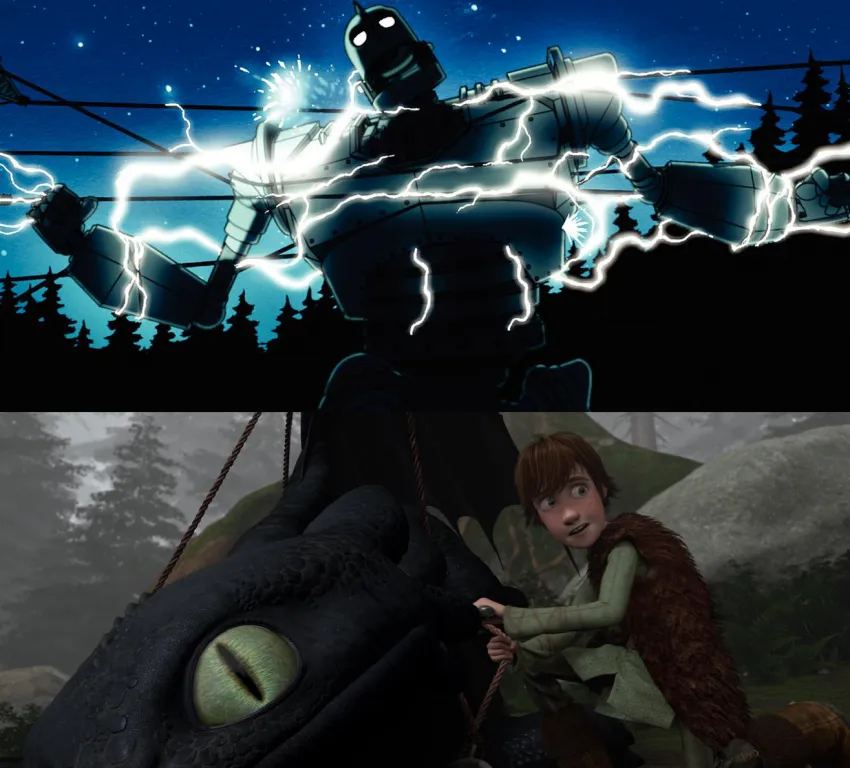
kingofthewildwest.tumblr.com
Possibly one of the most obvious similarities between the films is the fact that both boys befriend a being that has fallen from the sky, supplying them with food and teaching them new skills.
Hiccup discovers Toothless in the forest after shooting him down. After realising that he is injured because of him, Hiccup sets about befriending Toothless and constructing a mechanical tail fin for him that he helps Toothless use, essentially helping him to learn to fly again with the new implement.
Hogarth stumbles across the Giant in the forest and, after realising that the Giant is able to learn by mimicking him, starts to teach him how to speak and tell him about the world.
Additionally, both characters’ instinct upon finding these discoveries is to document them−Hogarth with his camera and Hiccup with his notebook−and both end up having to hide their discoveries from their towns, getting into some sticky situations in the process.
The Giant and Toothless are misunderstood
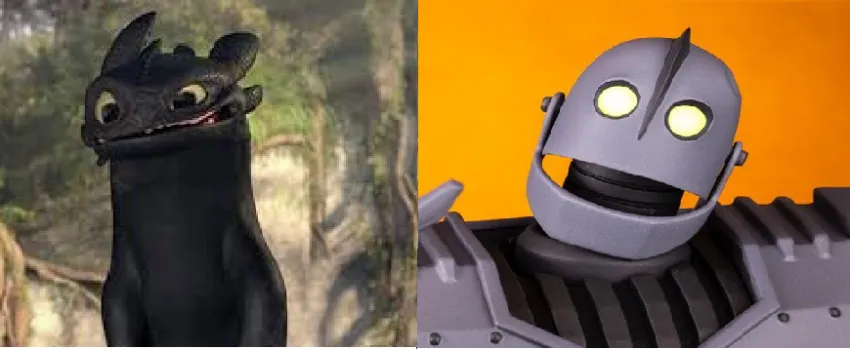
Due to the preconceptions of the adults in the films that dragons will kill them if they get the chance and the Giant must be a weapon from Russia or another country looking to invade, both Toothless and the Giant are misunderstood and feared.
Yet, both are instrumental in saving the respective human communities. Toothless works with Hiccup to kill the dragon queen and the Giant sacrifices himself to draw the missile away from the town.
The major misconception in both films is that the dragons and the Giant will attack the humans first when the opposite is true; they only attack when they feel the need to defend themselves.
This is exemplified by their physical features. When in a neutral or happy mood, Toothless’s teeth remain retracted in his gums, it is only when he is forced to fight that they emerge (obviously he uses them to eat too, but still).
Similarly, the Iron Giant only transforms parts of his body into weaponry when he perceives a gun, it is like a defense mechanism. The prejudices against the dragons and the Giant are demonstrated at the beginning of the film.
The Opening Scenes
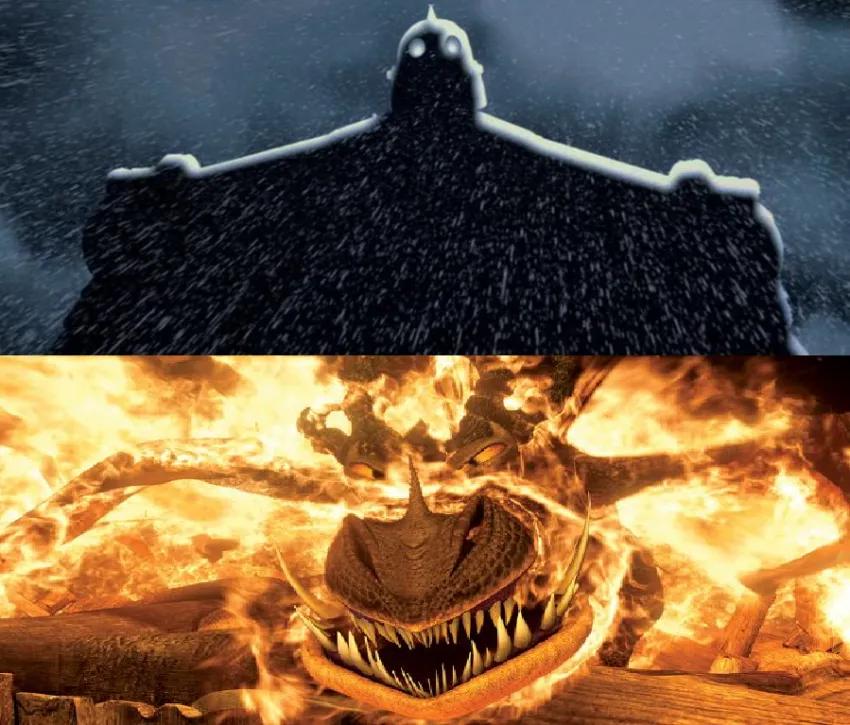
quotev.com
Some of the first things that might be drawn from the two films are the parallels between their opening scenes. The Iron Giant begins with the Giant falling from space and landing in the sea on Earth during a violent storm.
At the same time, a lone fisherman has been caught in the storm and is fighting to keep control of his boat while trying to find the lighthouse that will lead him to land. The Giant rises out of the sea, causing the fisherman’s boat to crash and the fisherman to nearly drown.
In How to Train Your Dragon, the film opens with the Vikings in the middle of a battle with the dragons as they try to protect their livestock. In both instances the Giant and the dragons are initially presented as entities to be feared; the Giant as an ominous unknown presence, and the dragons as persistent fire-breathing predators.
It could be that the intention of the filmmakers was to have audiences’ views initially align with the adults in the stories, who are ruled by their paranoia and fear of the unknown, before seeing Hiccup and Hogarth’s journeys as they learn and interact with the Giant and Toothless.
Friends Come to their Aid
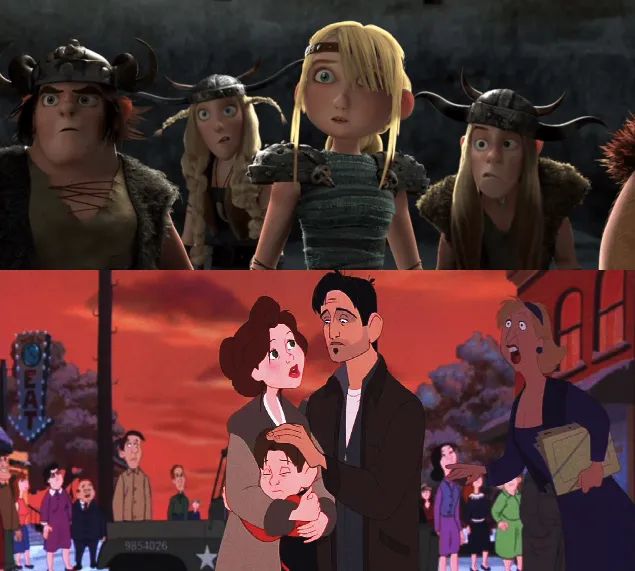
sofiaherzen.tumblr.com
Hiccup and Hogarth’s befriending of Toothless and the Giant leads to their becoming close with others, building strong friendships, and showing that people’s beliefs can change.
Having trained most of her life to hunt and kill dragons, Astrid (America Ferrera) is highly skeptical of Toothless at first, even attempting to attack him. However, after hearing Hiccup out and spending time with Toothless she realises that her views may have been wrong, becoming closer to Hiccup as a result and helping him persuade the other kids that dragons aren’t dangerous. Astrid and the others then become instrumental in the fight against the dragon queen.
Dean (Harry Connick Jr.), an artist in The Iron Giant, is a little easier to persuade but holds similar beliefs that have to be overturned when Hogarth introduces him to the Giant. Dean fears the Giant initially but, after observing him, he is willing to accept him, especially when he realises that he can help him with his art; however, he is still cautious and quick to protect Hogarth when he thinks he needs to.
Despite his caution though, he never makes hasty judgements and is the first to recognise that the Giant only becomes offensive when it sees weapons and tries his best to persuade the military of this and help Hogarth as much as he can.
Kids Have To Go Up Against Adult Antagonists

In both films, the kids have to go up against adult antagonists who think they know better. For Hiccup it is his father, Stoick, who has been raised to fight dragons his whole life and is determined to find their nest, thinking it will protect his village.
For Hogarth, it is Kent Mansley (Christopher McDonald), a corrupt government official whose determination to get some recognition outweighs his concern for the people of the town.
In both narratives, the men rally forces against Toothless and the Giant, with Stoick gathering the village’s fighters, and Kent calling in the military. The cause of their behaviour is also the same; they are fuelled by ignorance, close-mindedness, and paranoia, unable to perceive the reality of their situations and the danger they put others in.
Stoick ends up freeing the dragon queen, risking the lives of his village, clinging to the delusion that he can defeat it, while Kent launches a missile attack on the town that will kill everyone.
Toothless And The Giant Sacrifice Themselves To Save The Town
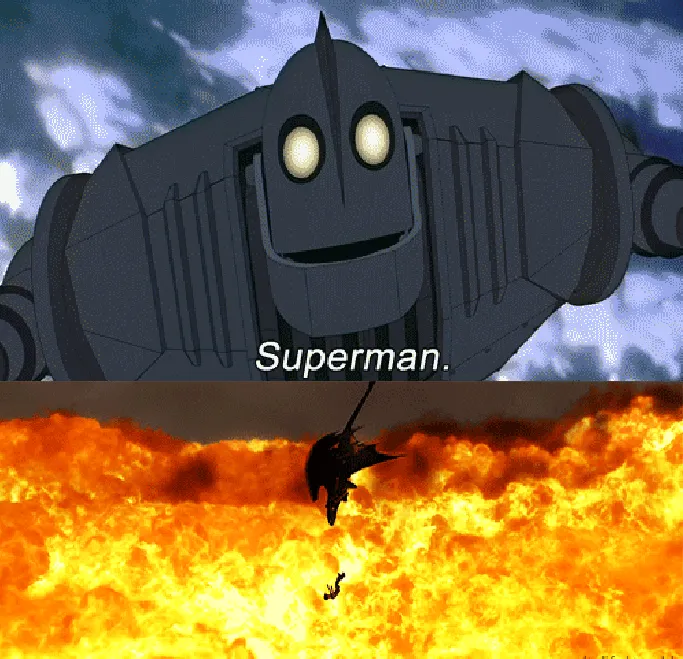
wattpad.com
Because of Stoick and Kent’s actions, Toothless and the Giant are forced to save the towns, sacrificing themselves in the process. Toothless and Hiccup go head-to-head with the dragon queen and end up getting caught in an explosion, seeing what’s going to happen, Toothless uses his body to protect Hiccup. Although he survives, it’s safe to say that Toothless wouldn’t have known he would live when he chose to shield his friend.
Similarly, the Giant saves the town from the missile by putting himself in its path causing the missile and himself to explode before it reaches the town. Though it initially seems like he is dead, the end of the film does show the Giant putting himself back together again, but like Toothless, the Giant might not have known that would happen, the missile could have had the power to completely destroy him for all he knew.
Through these acts of self-sacrifice, the village and the town’s opinions and mindsets change, with the village of Berk adapting their lives to include dragons, and Hogarth’s town treating the Giant as a hero, erecting a statue in his honour so people will know what he did.
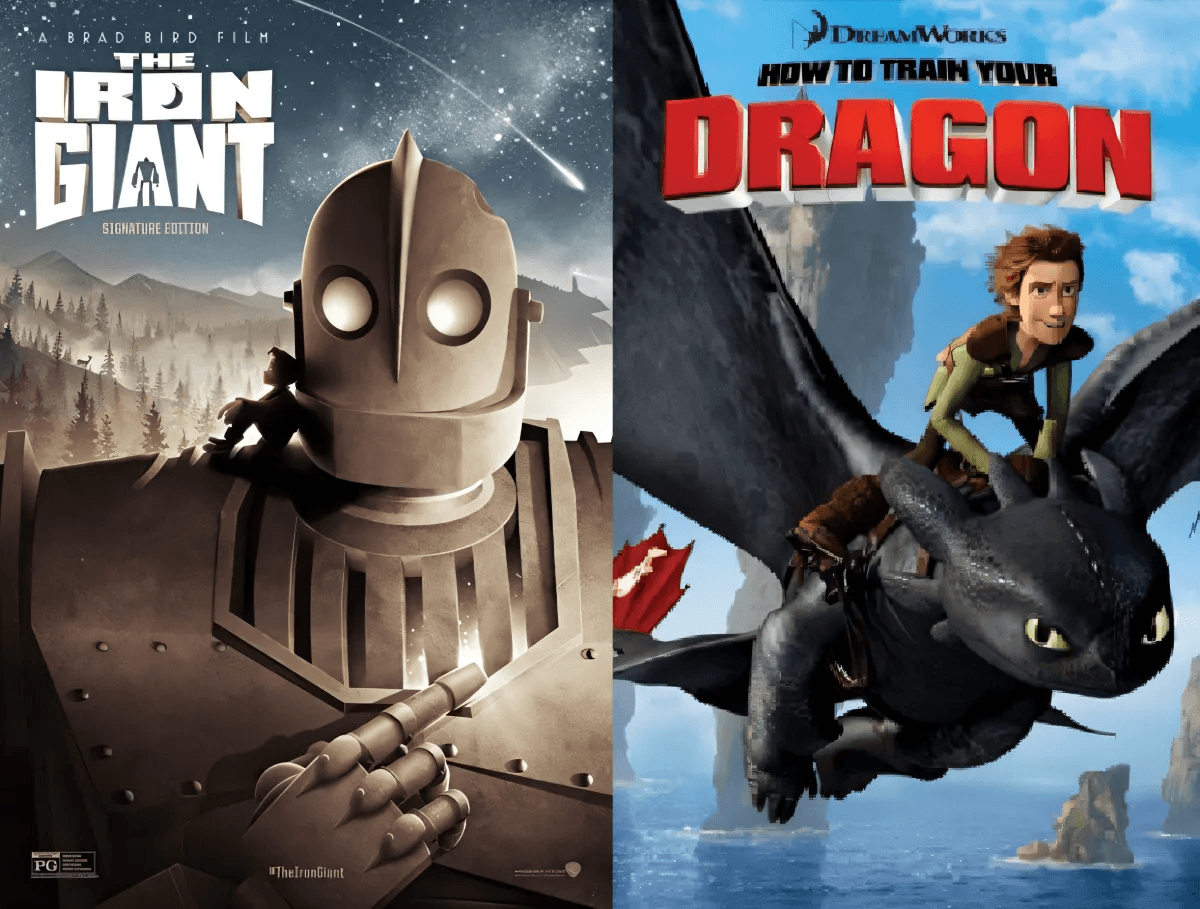
While How to Train Your Dragon and The Iron Giant are beautiful unique films, the bare bones of each story are the same. They challenge the prejudices and unfounded fears people have and show that by keeping an open mind everyone could be better off.
They also make an interesting observation about the willingness of children and adults to learn, and how a simpler way of seeing the world can actually be beneficial. The power of the innocence of children isn’t a new element to have in a story, but it is done very well in these films.
These films are beautifully created, well-acted creations with poignant messages that are emotional and applicable to audiences of all ages, and hopefully, they won’t be the last to be made.
Opinions and Perspectives
I love how both creatures are initially presented as threats but revealed to be gentle
Its fascinating how both stories use the protagonists intelligence rather than strength
The sound design in both films really helps sell the emotional moments
Dean and Astrid serve similar narrative purposes but are such different characters
Interesting how both creatures have retractable weapons they only use when threatened
The way both creatures learn and adapt through their friendship with the boys is really well done
Both movies handle heavy themes in such an accessible way for younger viewers
Watching Hogarth teach the Giant about death hits differently as an adult
I actually prefer Iron Giant. The Cold War backdrop adds another layer of depth
The scenes where they first discover their companions are so different yet achieve the same emotional impact
Anyone else think Dean is a more interesting character than Astrid though?
I think comparing these two diminishes what makes each special in its own right
The transformation of the communities views by the end of each film feels earned and realistic
Jennifer Aniston and Gerard Butler both did amazing jobs voicing the parent characters
The visual styles are so different though. HTTYD has that dreamworks polish while Iron Giant has that classic hand-drawn feel
I love how both movies show that children often see truth more clearly than adults do
Totally agree with the assessment of Kent and Stoick. Their fear leads to the biggest disasters in both films
The point about documentation is interesting. Both boys try to record their discoveries in their own way
I actually think the parent-child relationships are portrayed better in The Iron Giant. Annie feels more realistic than Stoick
The way both movies handle friendship and trust is really beautiful. I love how the relationships develop naturally
My kids love both these films but I never made these connections before. Great analysis!
Anyone else notice how both Toothless and the Giant only become aggressive when threatened? Such a powerful message about defense vs aggression
I disagree about them being basically the same movie. The settings and character motivations are completely different
The part about adults being the real antagonists is so true. Both Kent and Stoick let their prejudices cloud their judgment
Interesting point about the opening scenes. They both start with stormy weather and fear of the unknown
What struck me most was how both Hiccup and Hogarth are outcasts who find friendship in unexpected places
I actually think HTTYD is way more complex in its themes. The Iron Giant is great but much more straightforward
The single parent dynamic really hits home. As someone raised by just my mom, I totally get the struggles both protagonists face
I never noticed these similarities before! Both movies are among my favorites and this analysis really opened my eyes
